Maxwell for SU VS Twilight
-
@bjornkn said:
@zoom123 said:
Thanks massimo. Still the way they have materials organized at Maxwell seems better with all 4000 materials in one searchable database. On the other hand the ability to create materials with Kerkythea which is free is a big plus, since from what I understand to create materials for Maxwell you need to buy the Studio which is very expensive.
What? Can't you make your own textures in Maxwell, like using your own bitmaps for wallpaper, tiles etc?
That would be a big con in my book.
How about using a spherical camera? Not that useful if you're limited to 3000px wide, but still..Yes you can make your own texture-based materials within the plugin, but for more complex materials it's best to use MXED which is part of the full suite.
No spherical camera.
Best,
Jason. -
One thing to understand about the price difference is that the full Render Suite includes all the plugins for any app they support for free and all of that is cross platform as well for free. This makes it a really nice solution for people who work with multiple modeling packages on a regular basis... as I said before, it's meant for people who make a living rendering (not necessarily modeling).
For instance the Maxwell Render Suite comes with all of this for free:
Plugins for modeling packages:
- 3dsMAX
- Archicad
- Bonzai3D
- Cinema 4D
- Form·Z
- Houdini
- Lightwave
- Maya
- Microstation
- Modo
- Rhinoceros
- SketchUp
- Softimage
- Solidworks
Plugins for post-processing packages:
- After Effects
- Nuke
- Photoshop
As well as a dedicated stand-alone Studio environment to work with models from packages that are not supported by plugins. And of course the Suite is supported on Windows, Mac, and Linux.
Also as an aside (to no one in particular), the overreacting on hearsay or conjecture is pretty amusing the first dozen times it happens but after a while it gets pretty tiresome -- before jerking the knee in overreaction perhaps some slight investigation about the facts is best.
Best,
Jason. -
@jason_maranto said:
Also as an aside (to no one in particular), the overreacting on hearsay or conjecture is pretty amusing the first dozen times it happens but after a while it gets pretty tiresome -- before jerking the knee in overreaction perhaps some slight investigation about the facts is best.
Best,
Jason.lol, isn't that what forums are for... to hear the same questions and incorrect information repeated over and over. I think people are a little more savvy than to believe everything they read right away (at least I like to think so.)
I think you've done a great job explaining your product. I've been following your posts and announcements with interest and when I have time I intend to give maxwell a try.Andy
-
@andybot said:
lol, isn't that what forums are for... to hear the same questions and incorrect information repeated over and over. I think people are a little more savvy than to believe everything they read right away (at least I like to think so.)
I think you've done a great job explaining your product. I've been following your posts and announcements with interest and when I have time I intend to give maxwell a try.Andy
I like to think so too -- but I'd like to help prevent bad information from circulating (if I can) only to make the comparisons between engines based on the very real differences.
BTW to be clear I don't work on Maxwell, I'm just a enthusiastic user -- however, I do tutorial videos for software and Maxwell is one of the 5 software's I teach (SketchUp is another).
Best,
Jason. -
@unknownuser said:
I like to think so too -- but I'd like to help prevent bad information from circulating (if I can) only to make the comparisons between engines based on the very real differences.
First thank you for the info you gave so far.
I would be very glad if I could be given a comparison between the engines based on the very real differences. Actually that is what I was asking, the pros and cons of each. It seems there is nobody that knows both applications well enough to do this.
-
I haven't looked at twilight for quite some time, so I would be no help there but it seems to me that you already have quite a bit of information in regards to the 2 engines within this thread -- the only way you'll likely get more is by actually trying them.
If you do, give back to the community by posting your thoughts and the reasons you came to the conclusions you did.
Also don't underestimate the value actually working within the UI and workflow -- if it doesn't work for you then it doesn't matter how nice the results other people get are.
Best,
Jason. -
I installed both applications and I am trying them. I might even add the 14 day Shaderlight Trial to the mix!
-
I downloaded the trials of Shaderlight and VRay for SU to try them out in addition to Maxwell for SU and Twilight.
Shaderlight is really simple to use, has a nice interface and several video tutorials and webinars which all combine to make it a good choice for new users that don't want to spend a lot of time to learn a program. Unfortunately it didn't take me long to notice some quite significant issues with the rendering engine. In their forums they said that they are working on these issues to be solved in the next version, but personally I will have to eliminate Shaderlight from the options I am evaluating.
Vray gave me some good results with mostly default options on exterior scenes. The only question is if I will be patient enough to learn how to use it!
-
Vray doesn't fit the "easy to learn and free" criteria you had established in the beginning... are you considering buying something now?
Best,
Jason. -
@jason_maranto said:
Vray doesn't fit the "easy to learn and free" criteria you had established in the beginning... are you considering buying something now?
Best,
Jason.Yes, although I still don't think I want to spend $800, especially if I can get something adequate for me for $100 or $0. Vray has a 30 day trial, if within this time I manage to learn it good enough to be able to produce results much better and/or much faster than any other renderer then I will consider it.
I am also planning to test Kerkythea and Indigo RT. How do these compare in terms of learning curve?
-
Yeah at $800 for VRay you could get the full Maxwell Render Suite for less at $700 which offers much more room to grow beyond just working inside SketchUp.
The others I don't know very well, so hopefully somebody else can comment.
Best,
Jason. -
My issue with Maxwell so far is rendering speed. Would the Render Suite be significantly faster?
I understand that unbiased renderers are slower by nature but that in the end they can produce more realistic results. The problem is that trial and error is part of the learning process for me, and with a slower renderer I would learn slower as well.
-
Generally setup time with an unbiased renderer is greatly reduced -- so the render takes longer but the setup time takes less which to me is a good tradeoff. Set-up time requires you to be in front of your computer and actively engaged -- whereas render time does not... you can easily render at night or other times when you will not be using the computer.
This way the computer is working for you, as opposed the you working for the computer.
Also Maxwell comes with 5 render nodes included so you can have up to 6 computers working together or separately on whatever you need.
Best,
Jason. -
I guess that would work good when you know exactly what you are doing and you know what results you will get. So you set everything up the way it should be and then let it run overnight. But when I am learning I like to experiment. I would change something, e.g. lighting or a material, and then render to see what effect my changes had. Then change it some more and render again, and so on and so forth.
It would be nice to have some sort of "lower quality" setting that you can use while learning or experimenting, and then when you are satisfied with the results let it run overnight for the best quality.
-
After about a week of trying different applications (Twilight, Maxwell for SU, Shaderlight, V-Ray for SU and Podium) I finally decided to settle on one of them.
Obviously it would be be impossible to fully learn all applications within such a limited time but a decision had to be made eventually even with the limited info I could have during such short period.
I made a model of my home office in Sketchup and then I tested each of the above applications based on the following factors (in no particular order):
- How close the rendered image was to my actual home office (both during day with light from the window and night with artificial lights)
- How user friendly and easy to use was the interface
- Required features
- Availability of Tutorials and video Tutorials online to help me learn the application quickly.
- Cost
- Speed of Rendering
Shaderlight had the easiest to use interface, had several tutorials and webinars and it was relatively fast. Unfortunately the rendering engine itself didn't seem to be up to par with some of the other applications, while the cost was higher than most of the other options.
Podium was also very easy to use although the interface didn't seem as refined and it had fewer features. Some presets were very fast to render, but unfortunately the rendering engine again didn't seem to be at the level of some other applications (even with the best quality presets which took much longer to render). The cost is not high, but still higher than some of the competition.
I tried V-Ray to have a taste of what seems to be the favorite application for many here, even thought the cost was way higher than the rest. I got good results rendered quickly without messing too much with the zillion options available. There are also plenty of tutorials online about Vray. But ultimately the cost was too high for me and so was the learning curve (no point in paying $800 and then using just the defaults). Since I am not a pro I decided that I was not really willing to give up the amount of money and time required by V-Ray.
Maxwell for SU (standalone) has a nice and quite intuitive interface, although not as easy to use as Shaderlight or Podium. There are some nice tutorials online, but not that many yet (this app is new). The price is great and there is a free version with no time limits. Unfortunately for the time being it lacks a feature to easily create spotlights and it renders relatively slow. But if you don't mind to wait longer then the results seem to be very good.
I got very good results from Twilight, which if not equal are very close to those by V-Ray and Maxwell. Twilight has presets that give good results fast and other presets that give better results slower. It is not as easy to use as Shaderlight and Podium but it is almost as easy and with more features and at a better price. On the minus side the interface is not as polished as some of the other apps and I couldn't find any good video tutorials. My main issue with Twilight is that light strength is entered as some vague number (Podium does this also), not as Watts/Efficacy, Lumen or any real world unit as is the case with the other applications.
My choice in the end of this week was Twilight because none of its issues was a "deal breaker". I also liked Maxwell for SU and I will try it again if/when they include MXED, or some other way to include spotlights or IES lights. Shaderlight also showed potential, but I would consider it only if they make the improvements they promised in their rendering engine and also drop the price.
-
just prepared a fast model to compare light/render quality using maxwell and twilight.
on my machine twilight/kt and Thea were faster and less noisy comparing to free maxwell. but needs more feedback
-
I'm not sure what makes you think this is a good test scene for Maxwell (or anything else) -- the render I'm getting with your environment settings and exposure settings is basically a blown-out white mess.
Also one of your materials (the pink plastic) exceed the RGB to Spectral (CIE xyz) color conversion recommended threshold for real world surfaces -- a brightness of about 87% or RGB 225, 225, 225 is the real world brightness of a white sheet of paper... anything brighter than that is not only unrealistic but also will produce more noise by reflecting too much energy back into the scene.
Also the low roughness of the emitters reduces the light emitting strength (so that the parameters are no longer true to life) and adds no appreciable effect if you are intending an indoor scene (but for that you would need to turn off the physical sky, which is adding unnecessary calculation time).
Also surrounding an emitter with shiny metal is a very bad idea as this introduces reflected caustics into the scene which will create more noise and make render times longer for no good reason.
And finally Maxwell is a render engine that is meant to work with real-world parameters and that means everything should be modeled to real-world scale and have the same details as a real-world objects -- as near as I can tell this scene bears no relationship to any real world scenario that has ever existed.
If you want a good test scene try one of the "eye candy" models that are modeled very well and will show what Maxwell is capable of when dealing with geometry that is properly made.
Best,
Jason. -
Here's a couple of renders at 800 pixels wide using your scene as-is (geometry-wise) but with a few materials edited and the physical sky turned off(see attached sketchup file).
The free version of the plugin only has the "draft" engine which is not well suited to complex lighting -- the $99 version comes with the prodcution engine which is better suited to such tasks.

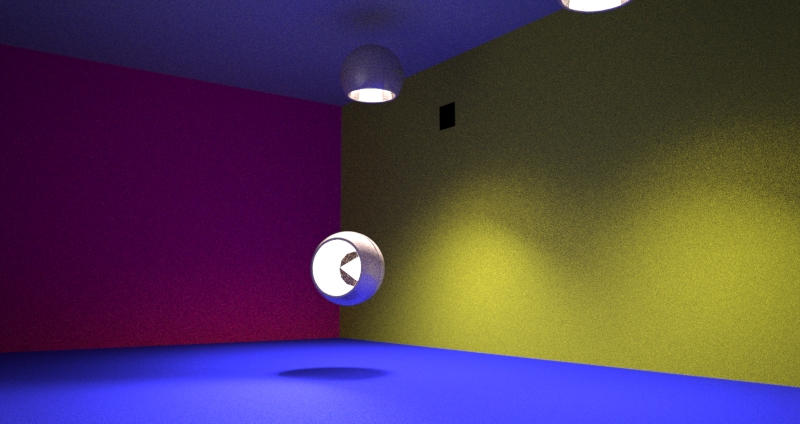
I can get better results by editing the geometry which I will do next.
Best,
Jason. -
Here's the a version with edited geometry (see attached SketchUp file) at 10 min with the production engine ($99 version of the plugin)
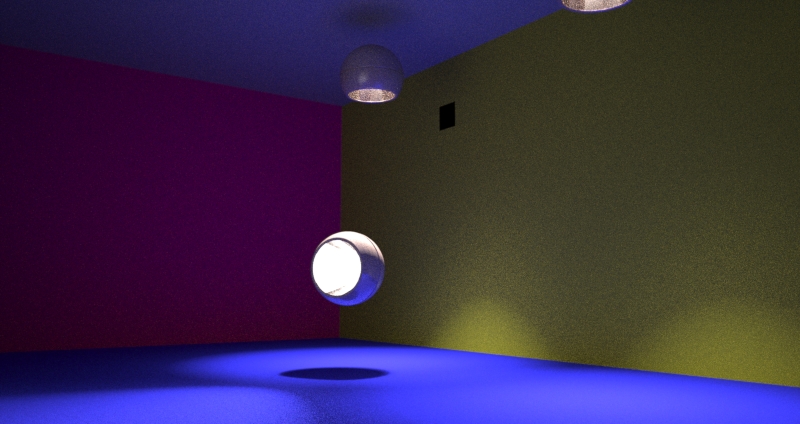
Here's the results of the same scene using the full Maxwell Render Suite ($696.50) at 10 minutes and with Color Multilight enabled which allows me to not only adjust the intensity of the light but also the color as well.
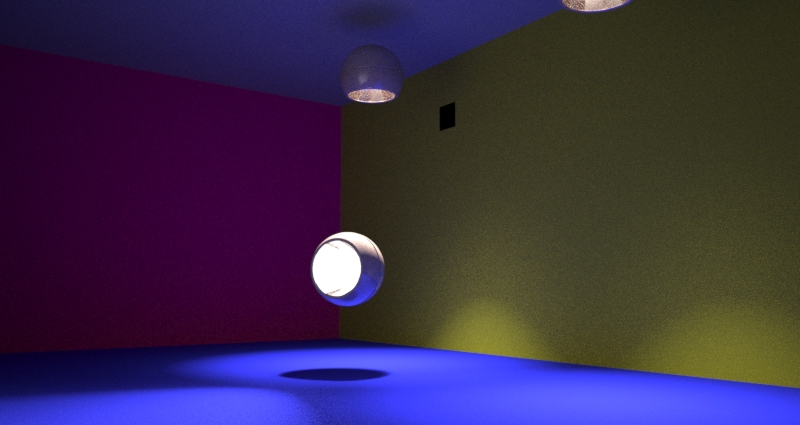
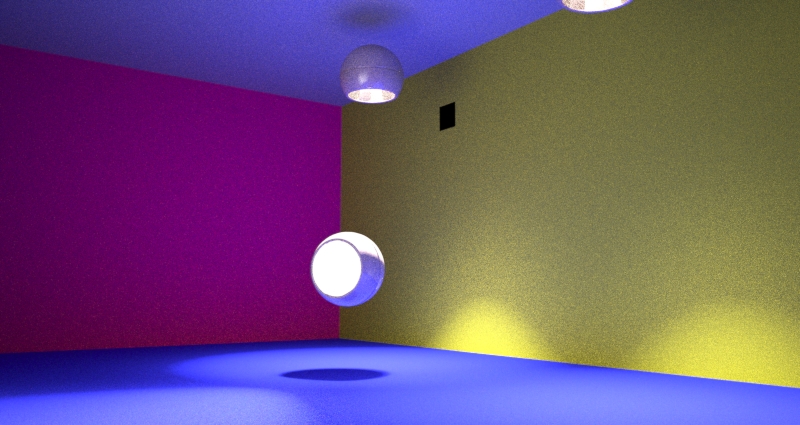
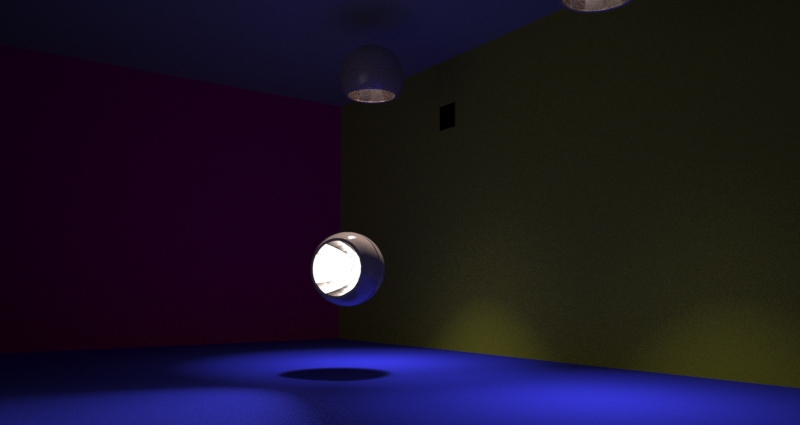
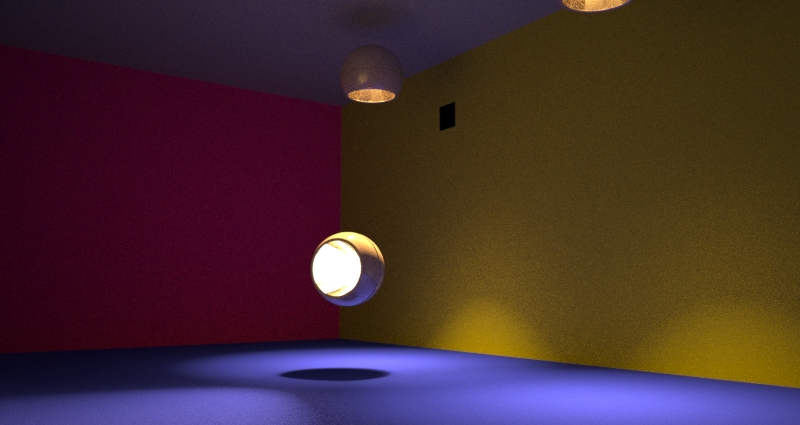
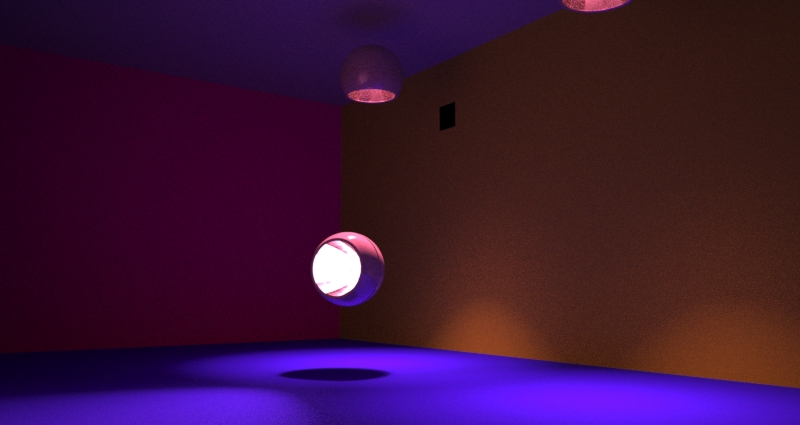
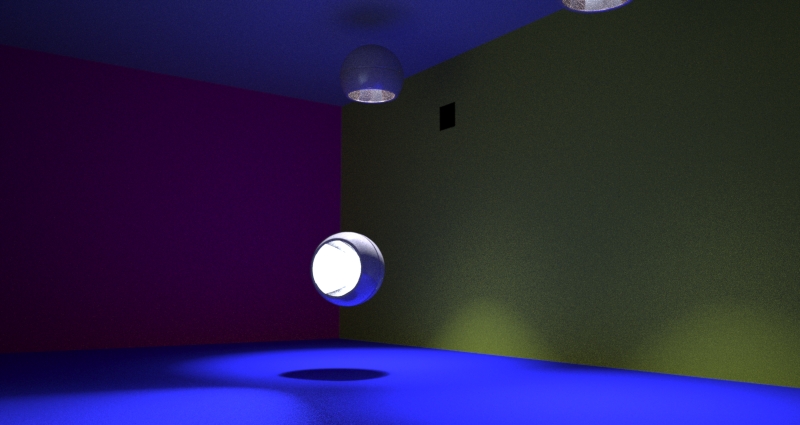
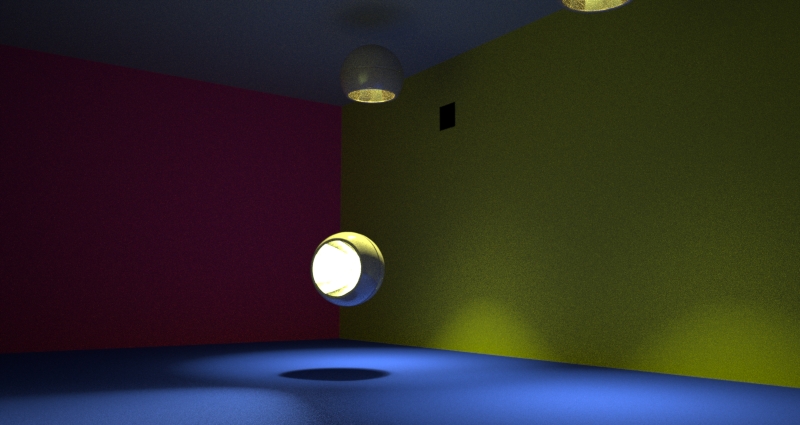
Best,
Jason. -
I suppose I should say as a point of reference I am using a Intel i7 920 processor (@2.67 GHz) -- which is hardly the latest/speediest hardware available... so anybody who has a better processor/ more cores should be able to get much better/faster results.
Best,
Jason.
Advertisement







